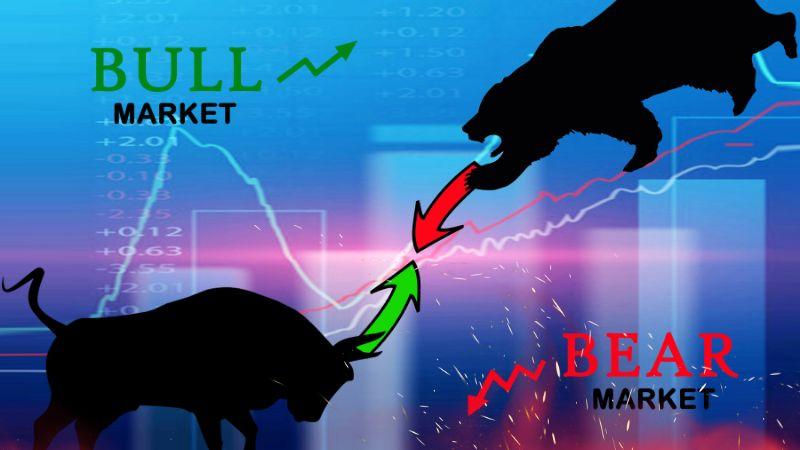By Dipesh Ghimire
Options Buying vs. Options Selling: The Real Battle Between Risk and Probability

Every trader stepping into the world of derivatives faces one of the oldest questions in financial markets — should I buy options or sell them? Both strategies belong to the same family but behave like complete opposites. One thrives on volatility and speed, while the other depends on stability and time decay. Understanding this contrast is the foundation of successful options trading.
The Basic Difference
Buying an option means you are paying a premium to gain a right — not an obligation — to trade the underlying asset at a fixed price before expiry. Selling an option means you are the one taking on that obligation in exchange for receiving a premium.
Think of it like an insurance contract. When you buy insurance, you pay a premium for protection. When you sell insurance, you collect that premium but agree to pay if something goes wrong. Similarly, an option buyer is the insured, while an option seller is the insurer. The buyer’s loss is capped at the premium, but the seller’s loss can be theoretically unlimited if the market moves aggressively in the opposite direction.
Understanding the Risk Correlation
The simplest way to understand risk in options is this:
When you buy an option, your risk is limited and your reward is unlimited.
When you sell an option, your reward is limited and your risk is unlimited.
This is why professional traders often say — “Buy options when you expect a storm, sell them when you expect silence.” Buying favors explosive market movements, while selling works best when prices remain calm or predictable.
The Three Pillars That Shape Option Prices
Options are influenced mainly by three variables — time, volatility, and direction.
Time Decay (Theta):
Time is the invisible force that continuously eats away at an option’s value. For the buyer, it’s a silent enemy; for the seller, it’s a dependable friend. Every day that passes without movement slowly benefits the seller because the option loses its value as expiry nears.
Volatility (Vega):
Volatility is simply a reflection of uncertainty. When markets expect big moves, option prices rise. A calm market means cheaper options. Thus, buying is more favorable when volatility is low and expected to rise; selling is smarter when volatility is already high and likely to fall.
Direction (Delta):
Ultimately, both sides depend on getting the direction right. Buyers need fast and strong directional moves; sellers prefer when the market stays flat or moves slowly. Wrong direction can hurt both, but the damage to sellers can be far greater because their loss has no limit.
The Nature of Risk in Options Trading
Options trading is not gambling — but it punishes those who treat it like one. The risk isn’t just in price movement; it lies in timing and psychology. A perfect prediction at the wrong time can still cause a total loss. The market often rewards patience, but in options, patience without precision becomes costly because every passing hour reduces value for buyers.
This is why professionals always remind beginners that options are a game of probability, not prediction. To win, one must respect the mathematics behind time decay and volatility.
When You Buy Options
When you buy an option, you are essentially betting on movement. A call option is a bet that prices will rise, while a put option bets on a fall. The beauty of buying is simplicity: your maximum loss is known the moment you enter — the premium you paid.
If your prediction comes true before expiry, the rewards can be extraordinary. But if the price fails to move, even a correct forecast of trend may not save you from the slow poison of time decay. Buying works best during breakouts, news events, or high-momentum markets where prices move fast and far.
When You Sell Options
Selling options is a game of patience and discipline. The seller becomes the insurance company, collecting premium from those who expect a big move. If the market stays quiet, the seller keeps the premium as profit.
However, the danger lies in the unknown. A sudden surge or fall can wipe out weeks of accumulated gains in minutes. Successful sellers don’t rely on luck — they manage risk through hedging, spreads, and strict stop-losses. Selling thrives during range-bound or slow-moving markets, where time decay continuously rewards the seller.
Pros and Cons of Each Side
Buying Options — Pros:
Limited and clearly defined risk.
Potential for exponential profit.
Requires less capital, allowing small traders to participate.
Buying Options — Cons:
High probability of losing the full premium.
Time decay constantly works against you.
Needs strong directional conviction and perfect timing.
Selling Options — Pros:
Time decay and probability of profit favor the seller.
Works well in neutral or calm markets.
Generates steady, consistent income if managed carefully.
Selling Options — Cons:
Requires large capital and margins.
Exposes traders to unlimited potential loss.
Demands constant monitoring and risk control.
Choosing Between Buying and Selling
There is no universal answer — both strategies have their seasons. When markets are quiet, selling options often wins because time decay ensures consistent gains. When markets are volatile or near major events, buying options can provide large, fast rewards.
In simple terms:
Buy when you expect motion.
Sell when you expect stillness.
Traders who learn to switch between these two mindsets are the ones who survive the longest.
The Power of Combining Both: Option Spreads
Modern traders rarely stick to one side. They combine both through option spreads, which balance risk and reward. For example:
A Bull Call Spread involves buying one call option and selling another at a higher strike.
A Bear Put Spread involves buying one put and selling another at a lower strike.
These strategies reduce risk, cap losses, and allow traders to profit even from small, controlled movements. Option spreads are not just safer — they are smarter ways to express market opinions.
Most seasoned traders agree: option selling wins on probability; option buying wins on potential. Sellers often win small but frequently, while buyers lose often but win big when right. The key is understanding which game you’re playing.
If your capital is small but your conviction is strong, buying gives you the best leverage. If your capital is large and you prefer consistency over thrill, selling becomes your edge. What separates winners from losers isn’t their choice of side — it’s their understanding of time, volatility, and discipline.









